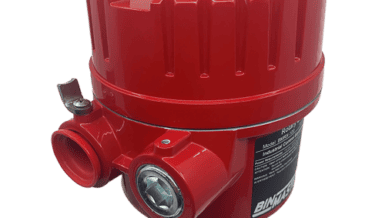
With almost 350 million tons in year 2016/17 soybean is one of the most harvested grains worldwide. The United States, Brazil and Argentina are leaders in the world production, but also in India and China the soybean becomes more and more important in the harvesting. Because of the high protein content and their high profitability the soybean crop is very attractive and important in the worldwide livestock feed. In Europe the soybean still is an exotic plant. Due to this, Europe has to import most of their demand.
Extruded soy meal is most commonly used for human consumption while the extracted protein-rich soy flour is used for livestock feed. The tendency for this latter requirement is a finer product and therefore a finer usability of the proteins.
Further developments for new requirements
Hosokawa Alpine Aktiengesellschaft has vast experience and know-how in the field of food processing. The long-established German company installed production lines worldwide in the fine grinding of Soybean-Processing-Products like full-fat soy, extruded-, extracted-, roasted- and Soy Protein Concentrate (SPC) flakes/grits.
Contraplex CW II – a new dimension in grinding quality
The CW II model is the latest version of the tried and trusted design, which has been optimized specially to suit customer requirements. This machine is mainly used in grinding foods and in manufacturing polymer powder. Hosokawa Alpine optimized the Contraplex® CW wide chamber mill based on an intensive customer survey. In developing the new generation of the CW II type, the engineers took into account the increased requirements from the user’s point of view. In order to markedly improve cleaning in terms of duration and accessibility, the CW II has been equipped with a larger door aperture and wider door opening angle. Cleaning of the scavenging air ducts in particular has been optimized from a GMP standpoint.
The drive concept was completely revised in the course of optimization. This optimization makes it possible to achieve higher sheer speeds and thus manufacture even finer products. The gearing on the drive on the housing side has been eliminated to avoid the risk of contamination of the production area by the gear oil.

Comparative tests on the new CW 250 II in the Hosokawa Alpine research unit have clearly shown that the revised drive concept has improved the energy efficiency (kWh/kg product) of the machine by at least 10%. This is also important in view of intensified focus on economic and ecological benefits.
Protection of plant operators and investment is of course an aspect not to be neglected. Therefore, the CW 250 II and CW 400 II are only available in a pressure-relieved design in order to be able to execute an explosion-proof system. The other European safety guidelines are still of course implemented in the plant concept.
Super fine grinding of extracted and extruded soy flakes

The fineness is very important. Extracted or extruded soy flakes with end-fineness below 150µm will be achieved with classifier mills like our ZPS. The ZPS classifier mill has been tried and tested for soy processing for many years.
The combination of impact grinding with the integrated dynamic classifier constitutes the perfect solution for the fine and ultrafine comminution of soft to medium-hard products.
Farmesa, a worldwide leading company in application-specific additives and food ingredients, installed one of our biggest mills in South America.

The feed product, charged to the machine by a system-sided feed unit via rotary valve, enters at the filling socket and is intercepted by the impact beaters on the beater disc. The size-reduction elements comprise an impact beater unit plus a stationary triangular-ribbed grinding track that surrounds the grinding chamber. The impact beater unit is designed to ensure that the grinding process is very efficient.
A Turboplex ultrafine classifier, with one or more horizontal classifying wheels, is integrated into the top section of the mill. The combined action of the grinding elements, the classifier and the supplied air ensures an exact cut point. The fine particles, which pass the classifier will be transported by the air-stream to a filter unit for discharge, all bigger particles will be rejected by the classifier wheel and are comminuted by the beater unit until they can pass through the classifying wheel.
Hosokawa Alpine technology center makes individual requests possible
The main concern for Farmesa was to have reliable, flexible and safe machinery. All organic products below 500 µm have the tendency to explode. Farmesa was eager to get a safe system and explosion protected system to protect their operators and their investment. As well the flexibility of the machinery to fulfill the changing market requirements was for Farmesa a reason for such investment.
Due to the natural variations of food products, tests at the Hosokawa Alpine technology center are advisable. With more than 3,000 sqm and more than 65 machines and complete systems Hosokawa Alpine in Augsburg has one of the largest test centers for wet and dry powder processing in the world.
Zirkoplex Classifier Mill ZPS guarantees perfect solutions

In 2016 in collaboration with Dynamic Air one of the largest powder technology centers in South America opened to provide the best support for customers. As a result, long delivery routes for the product samples to Germany are no longer necessary. Farmesa can now also run its tests on Hosokawa Alpine machines in South America.
Since the ZPS was installed in September 2017, Farmesa’s expectations have been fully met. Farmesa is satisfied with the plant’s efficiency and Hosokawa Alpine’s service.
As a long-term partner, the collaboration with the Augsburg-based machine and plant manufacturer is to be expanded in the future. Further joint projects are already being planned.










































